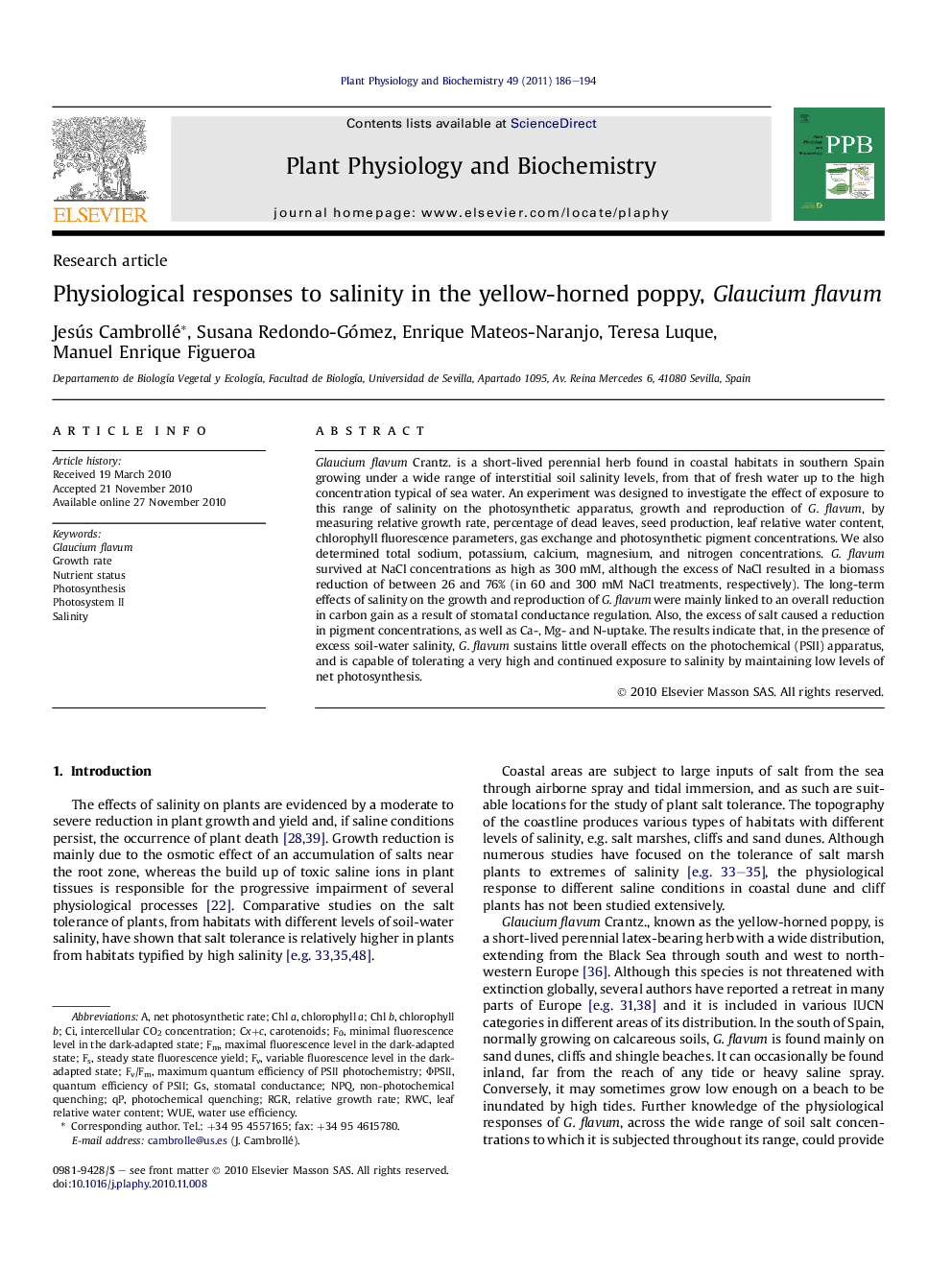| کد مقاله | کد نشریه | سال انتشار | مقاله انگلیسی | نسخه تمام متن |
|---|---|---|---|---|
| 2016486 | 1067663 | 2011 | 9 صفحه PDF | دانلود رایگان |

Glaucium flavum Crantz. is a short-lived perennial herb found in coastal habitats in southern Spain growing under a wide range of interstitial soil salinity levels, from that of fresh water up to the high concentration typical of sea water. An experiment was designed to investigate the effect of exposure to this range of salinity on the photosynthetic apparatus, growth and reproduction of G. flavum, by measuring relative growth rate, percentage of dead leaves, seed production, leaf relative water content, chlorophyll fluorescence parameters, gas exchange and photosynthetic pigment concentrations. We also determined total sodium, potassium, calcium, magnesium, and nitrogen concentrations. G. flavum survived at NaCl concentrations as high as 300 mM, although the excess of NaCl resulted in a biomass reduction of between 26 and 76% (in 60 and 300 mM NaCl treatments, respectively). The long-term effects of salinity on the growth and reproduction of G. flavum were mainly linked to an overall reduction in carbon gain as a result of stomatal conductance regulation. Also, the excess of salt caused a reduction in pigment concentrations, as well as Ca-, Mg- and N-uptake. The results indicate that, in the presence of excess soil-water salinity, G. flavum sustains little overall effects on the photochemical (PSII) apparatus, and is capable of tolerating a very high and continued exposure to salinity by maintaining low levels of net photosynthesis.
Research highlights
► Glaucium flavum can tolerate salinity levels of up to 300 mM NaCl.
► Salinity induces little overall effects on the photochemical apparatus.
► G. flavum survive at high salinities by maintaining a low assimilation of CO2.
Journal: Plant Physiology and Biochemistry - Volume 49, Issue 2, February 2011, Pages 186–194